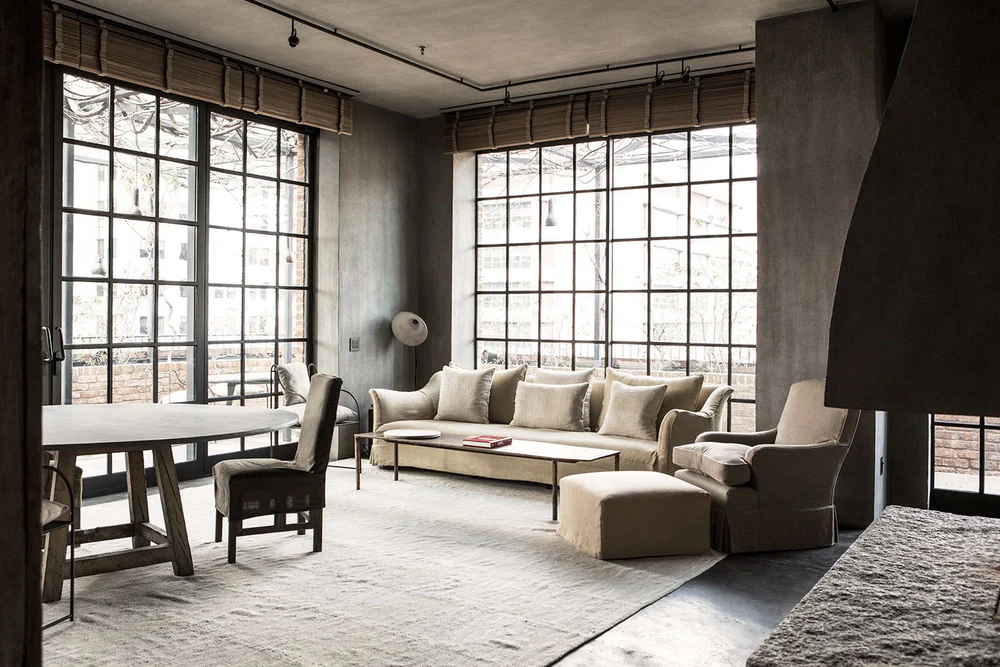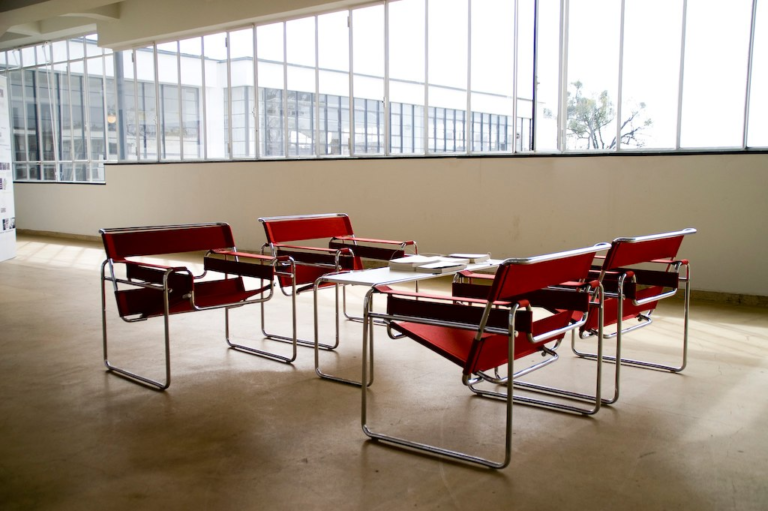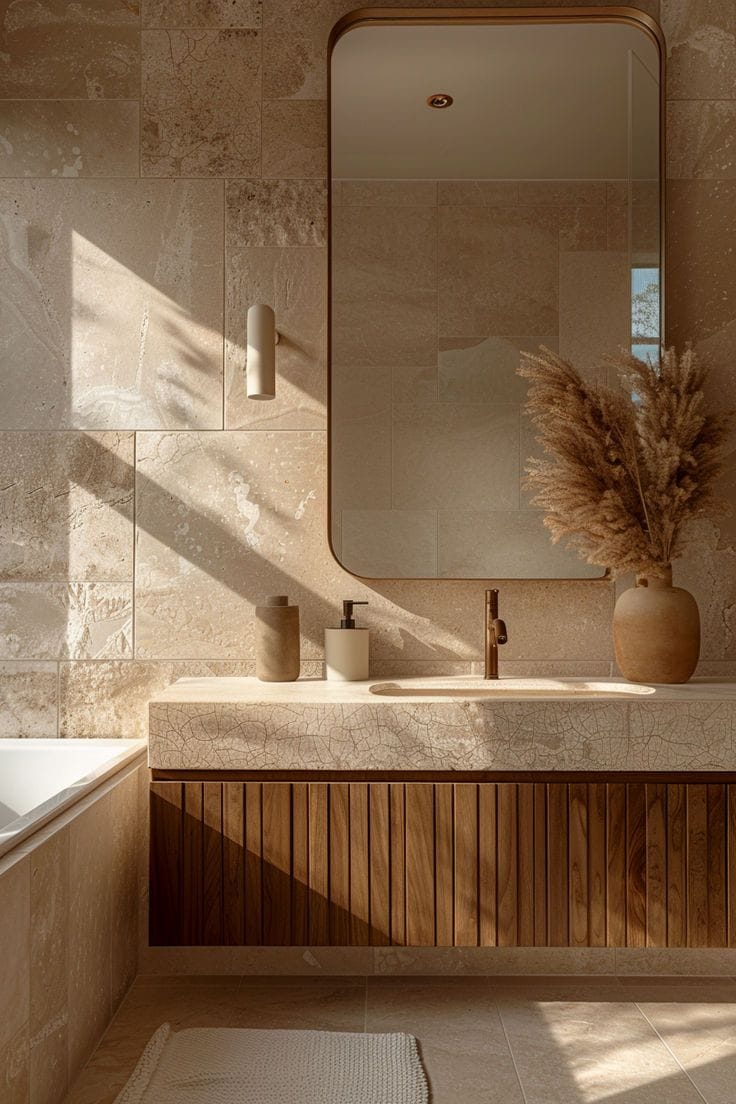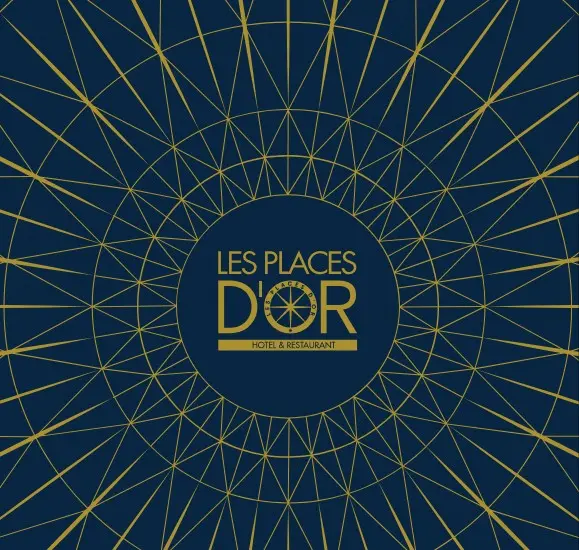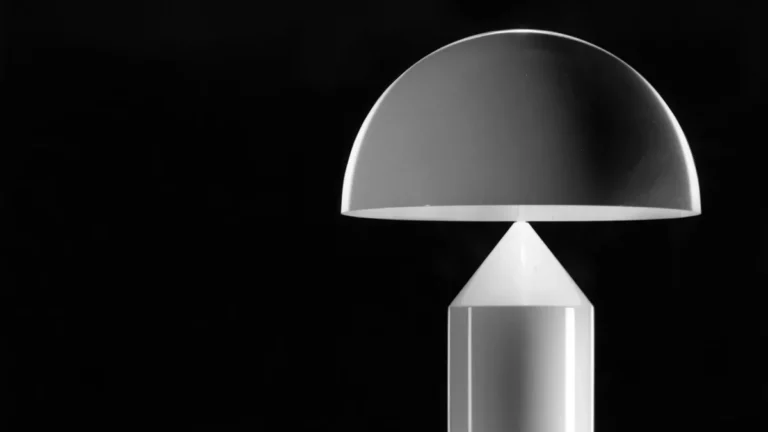The new language of contemporary refinement
The philosophy of discreet luxury
Among the current trends in luxury and high-end interior decoration, Quiet Luxury doesn’t show off: it’s experienced. It reveals itself in the density of washed linen, the feel of solid wood, the perfection of invisible joinery. Its roots delve into a culture of measure and long-term thinking: old houses, inherited objects, honored patina. Far from cold minimalism, it celebrates the warmth of the real, the beauty of materials and the sincerity of craftsmanship.
This movement is part of the continuity of confidential decorating trends that are redefining luxury in 2025, where discretion, sustainability and craftsmanship replace ostentation and excess.
The three pillars
- Absolute quality of materials: noble materials in their truth.
- Timelessness of forms: right proportions, calm lines.
- Chromatic sobriety: soothing palette, soft transitions.
The masters of chic austerity
Rose Uniacke: the nobility of silence
Rose Uniacke composes London interiors where whispered sophistication reigns. Her genius lies in the art of creating dialogue between 18th-century furniture and modernist pieces in soothing neutrality. Subdued light glides over aged plaster, caresses crumpled linen, reveals the grain of whitened wood. Her spaces play on textural contrasts: matte velvet against polished marble, rough surfaces against soft silks.
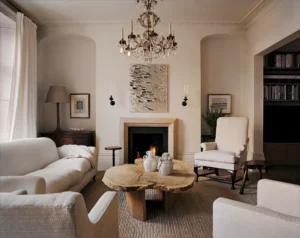
Signatures: inhabited ambiances never ostentatious, expertly orchestrated textural contrasts, natural light as silent protagonist.
Pierre Yovanovitch: sculpting calm
Pierre Yovanovitch develops a language where the sensuality of forms meets the rigor of proportions. His creations (armchairs with organic lines, tables sculpted like works of art) fit into a palette of muted tones: smoky beige, olive green, greyish blue, sienna earth. He reinterprets the elegance of the 1930s-1940s with soft modernity, where exceptional craftsmanship is revealed down to the hardware.

Signatures: contemporary reinterpretation of the 1930s-1940s, artisanal excellence in every detail, soothing volumes and controlled light design.
Liaigre: the nobility of silence and craftsmanship
Founded by Christian Liaigre and now led by Alain Demachy, Maison Liaigre embodies silent French luxury. Solid wood, raw linen, patinated bronze, full-grain leather: each material is chosen for its density and truth. Perfect proportions and a muted palette create sober, sculptural furniture that naturally dialogues with architecture. Here, precision takes precedence over effect, and comfort is born from exactitude.
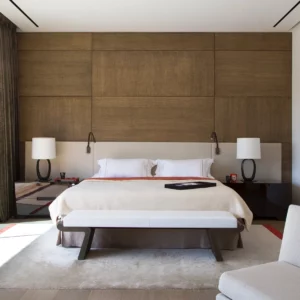
Signatures: precision before decorative effect, materials chosen for their density and authenticity, Quiet Luxury “avant la lettre” celebrating intrinsic beauty.
Vincent Van Duysen: architectural intimacy
For three decades, Flemish architect Vincent Van Duysen has pursued a quest for purity and balance. Stone, oak, lime, linen: he treats materials like instruments of the same harmonic score. His refuge-spaces demonstrate that simplicity can reveal unsuspected depth. Domestic architecture becomes soothing without ever verging on demonstration, while natural light transforms into a true raw material.
Signatures: soothing domestic architecture, muted palette that enhances the density of silence, light as structuring primary material.
Axel Vervoordt: the poetry of emptiness and time
Axel Vervoordt orchestrates a singular dialogue between art, architecture and spirituality. Raw stone, smoked oak, light lime, washed linen compose his material vocabulary. Inspired by Japanese wabi-sabi philosophy, he celebrates imperfect, humble and timeless beauty. His creations are meditations on fullness and emptiness, where slowness and calm assert themselves with obviousness. Patinas and irregularities become signs of nobility rather than imperfection.
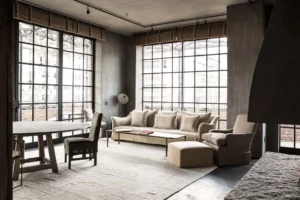
Signatures: meditation on fullness and emptiness, aesthetic of slowness and calm, patinas and irregularities as expressions of nobility.
The codes of Quiet Luxury
1. The invisible detail
Quiet Luxury is recognized by those perfect finishes that no one consciously notices: hinges that close silently, hand-stitched seams, traditional assemblies carried out according to the rules of the art. The artisanal gesture matters as much as the finished object.
2. The truth of materials
Marble with its visible veining, wood displaying its knots, linen accepting its natural creases. Nothing is masked or imitated: we sublime authenticity rather than camouflage it.
3. The soothing palette
Off-whites, beiges, stone greys, taupe, greige, chocolate brown form the chromatic base. When color appears, it remains muted: faded sage, stormy blue, softened terracotta. Contrasts remain soft, transitions fluid.
4. Space as luxury
Emptiness is worth gold in a Quiet Luxury interior. Each room breathes, each piece of furniture has generous space around it. It’s the spatial silence that structures the gaze and allows each element to exist fully.
5. Imperfection as nobility
Traces of time, natural patinas, leather that becomes lustrous with use: true luxury is never frozen in a “new” state. It enriches itself, evolves, tells a story.
Composing a Quiet Luxury interior at home
Subtract, clarify, refine
Before any purchase, decluttering becomes a priority. Keep only pieces that possess a true soul: family heritage, exceptional craftsmanship, objects charged with meaning. In this approach, emptiness becomes a precious ally rather than a space to fill.
Invest in the fundamentals
Concentrate resources on anchor pieces that will structure the space for decades. A natural linen sofa with generous proportions transforms a living room. A solid wood table (oak or walnut) designed to last transcends trends. A thick, sober and richly textured wool rug gently delineates spaces.
To go further in the choice of materials and understand the textile specificities of high-end design, consult our Guide to exceptional upholstery fabrics.
Raw materials, true textures
For textiles, favor washed linen that ages beautifully, robust twill cotton, matte velvet with sensual touch, warm bouclé wool, cashmere for exceptional throws. Floors and surfaces demand noble materials: oiled oak, Burgundy stone, travertine with subtle variations, marbles chosen for their veining.
And to extend the life of these noble materials, discover our secrets for maintaining upholstery fabrics, an essential know-how to preserve their brilliance over time.
Mastered chromatic palette
Build chromatic depth methodically: a light base (off-white, beige, soft grey) covers walls and large surfaces. Then add two to three complementary shades (taupe, ecru, milk chocolate) via cushions, curtains and rugs. Choose discreet metals like aged brass, brushed bronze or patinated steel, avoiding flashy chrome.
Light: designing without dazzling
Multiply sources of diffused light rather than aggressive central lighting. Table lamps with linen shades, adjustable wall sconces, LED strips hidden in cornices, quality candles compose a modular ambiance. Opt for a warm temperature (around 2700 K) and install dimmers wherever possible. Leave windows clear or dress them with linen voiles that filter light without obstructing it.
Sensitive contrasts
Create tactile richness by combining smooth and rough, matte and slightly satin, hard and soft. A marble top placed on a raw oak table, a cashmere cushion on a rough linen sofa, an alabaster lamp on a walnut dresser: these subtle contrasts compensate for chromatic restraint and invite touch.
The art of less, the taste for the real
Quiet Luxury is not clinical minimalism: it remains warm, inhabited, deeply tactile. It celebrates traces of life: the floor that creaks slightly underfoot, linen that wrinkles naturally, leather that patinas over the years. These marks testify to a lived existence and give places a soul that aseptic perfection never possesses.
Pitfalls to avoid
Cold minimalism
If your space evokes an art gallery more than a living space, the cursor has dropped too low. You must then reintroduce textile material, warm the light, multiply textures to rediscover this essential sensuality.
Bland monochrome
An entirely beige interior with uniform finishes ends up tiring the eye. Richness is born from variation: play on nuances, create reliefs, layer textures to avoid monotony.
Decorative snobbery
The presence of a visible logo contradicts the very spirit of Quiet Luxury. What matters is the artisan’s hand, the intrinsic quality of the object, the excellence of the craftsmanship, not the brand’s notoriety.
Soulless copy
Drawing inspiration from great creators remains legitimate, but reproducing their interiors line for line produces an artificial result. Rather seek coherence with one’s own way of living, real needs, deep personality.
A sustainable aesthetic
Quiet Luxury naturally dialogues with contemporary ecological issues. Less but better, authenticity of materials, object repairability, transmission between generations: these principles encourage restoring rather than discarding, favoring lasting materials and local know-how. This approach, paradoxically, joins a form of happy sobriety where luxury is measured by durability.
Quiet Luxury as a way of life
Beyond decorative choices, this aesthetic conveys a life philosophy. Slowing down to observe how light changes throughout the hours, listening to the familiar creak of the floor, feeling the texture of a fabric under one’s fingers. Facing the constant visual noise of social media and advertising, Quiet Luxury offers a form of elegant resistance: the luxury of silence, coherence, essence. Refinement for oneself, not for the eyes of others.
In conclusion
In a world saturated with images and visual stimulation, Quiet Luxury relearns the modesty of beauty. True sophistication doesn’t lie in complexity or accumulation, but in the rightness of each choice. Sometimes, a simple well-cut linen curtain says more than an entire wall of precious marble. Authentic elegance never shouts: it whispers.
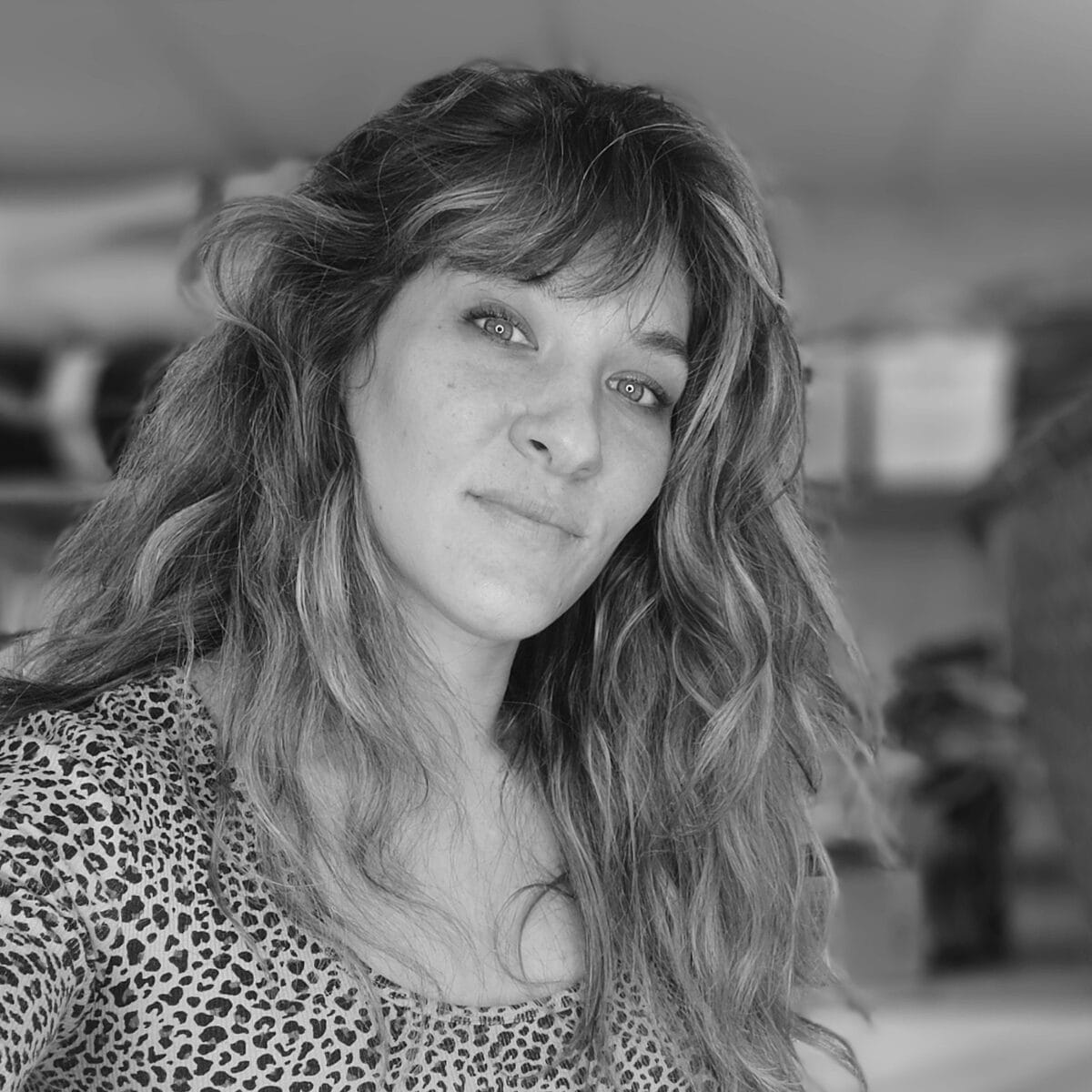
Digital entrepreneur and craft artisan, I use my unconventional background to share my vision of luxury design and interior decoration — one enriched by craftsmanship, history, and contemporary creation. Since 2012, I have been working daily in my workshop on the shores of Lake Annecy, creating bespoke interiors for discerning decorators and private clients.

